NATIONAL TOURS
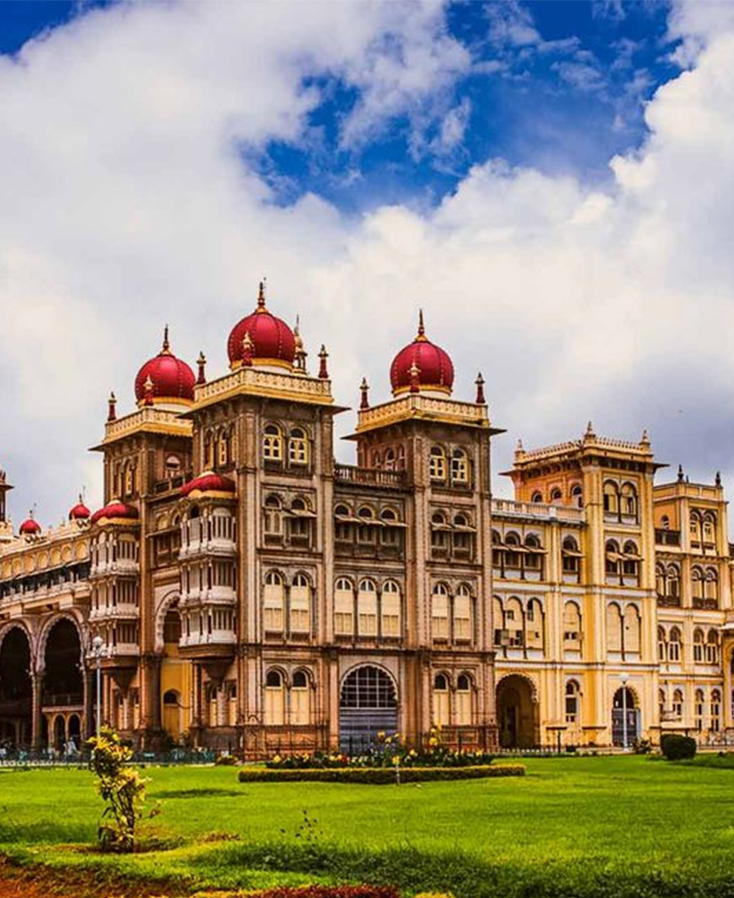
KARNATAKA
Karnataka, often referred to as the jewel of South India, is a state brimming with rich cultural heritage and breathtaking natural beauty. Nestled in the southern part of India, Karnataka boasts a diverse landscape that ranges from lush forests and pristine beaches to historic temples and bustling cities.
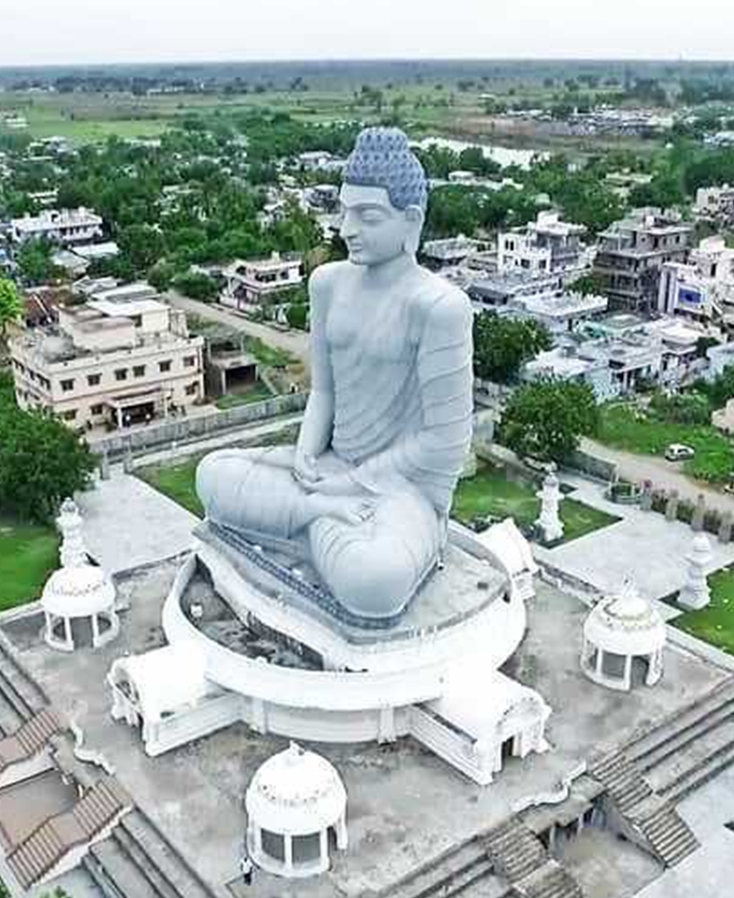
ANDHRA PRADESH
Embark on an enriching journey through the diverse landscapes of Andhra Pradesh, a state steeped in history and natural beauty. Explore the ancient ruins of Hampi, a UNESCO World Heritage Site, and marvel at the architectural splendors of the Srikalahasti Temple.
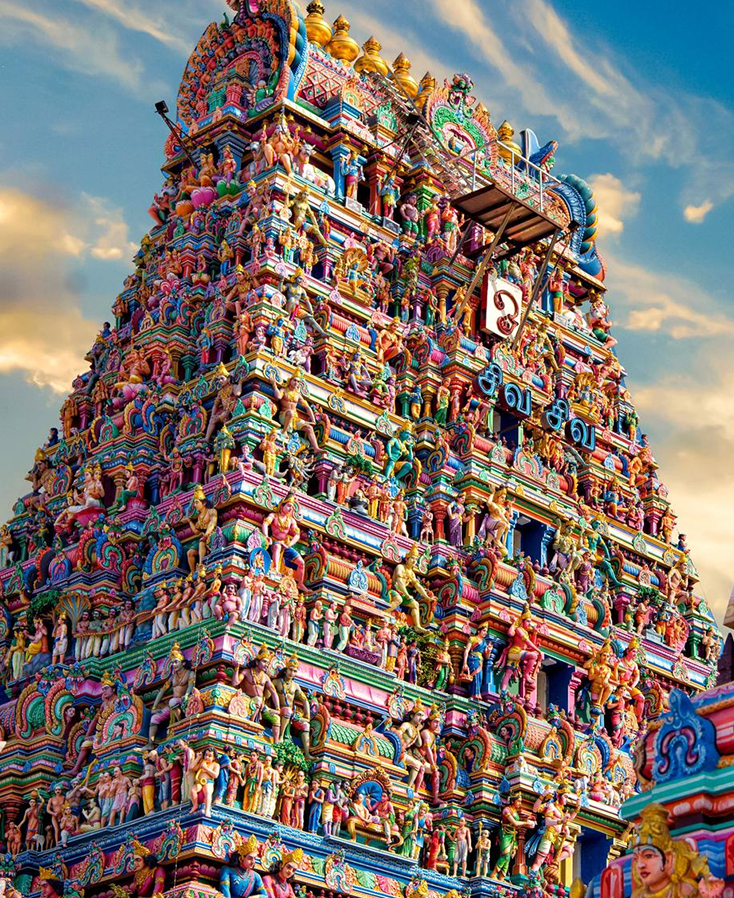
TAMIL NADU
The cultural tapestry of Tamil Nadu, a state steeped in history and natural beauty. Explore the ancient temples of Madurai, where spirituality and architectural marvels converge. Witness the stunning shore temples of Mahabalipuram, carved from solid rock, and bask in the coastal charm.
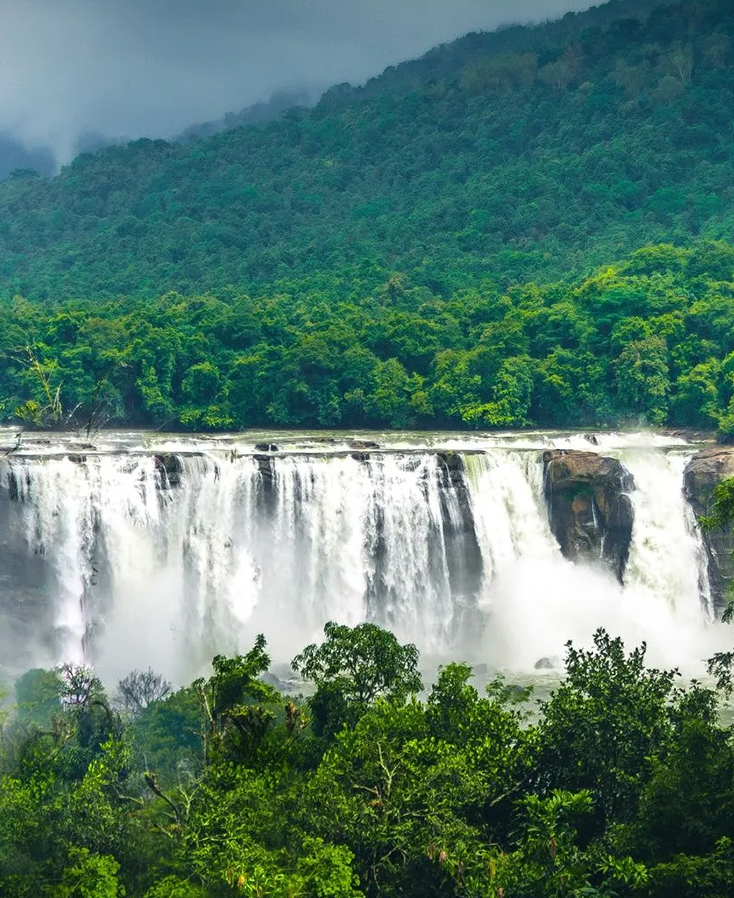
KERALA
Highlights include the backwaters, and the palm trees that border the coastline add to Kerala’s allure. Anyone visiting the “God’s Own Country” for the first, second, or third time will always find something to like there. As you search for the most breathtaking vistas, startling views of Cochin will make you happy.
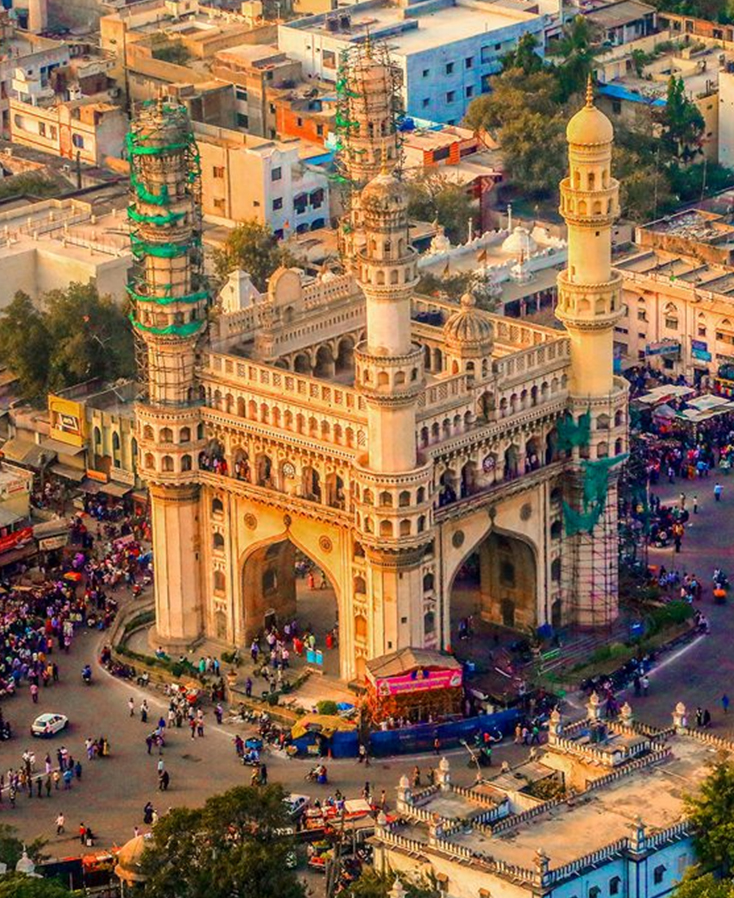
TELANGANA
Independence might have knocked the door in Telangana a bit late, but its tourism has been quite a hit even when it was part of Andhra Pradesh. Yes, this 29th state of India has so much to offer ranging from temples to history and from food to nature that you cannot help falling in love with it.
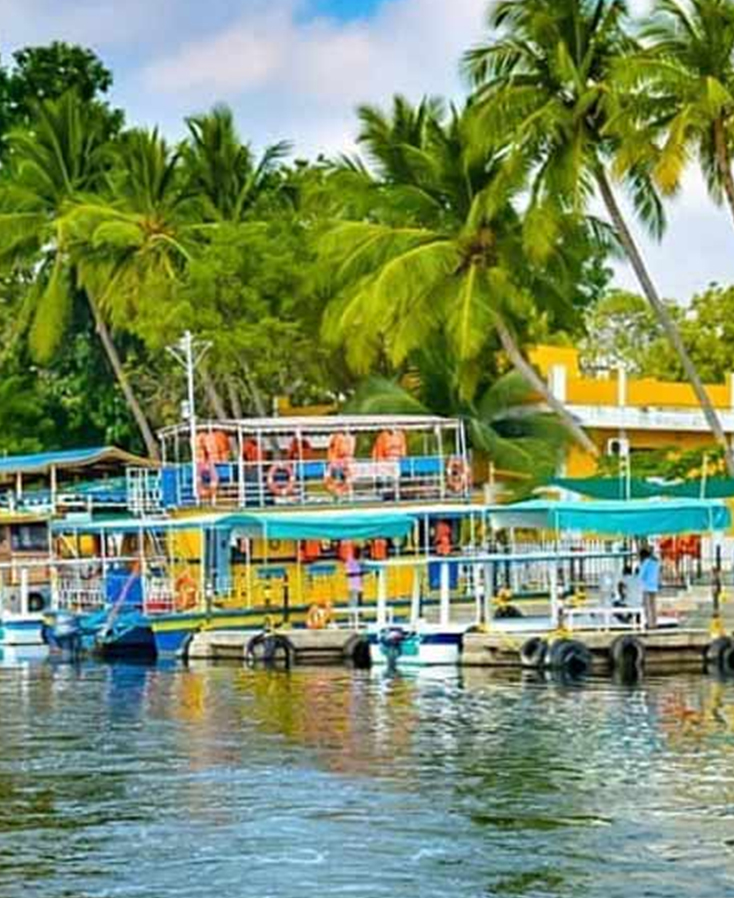
PUDUCHERRY
Surprise yourself with a visual treat of mini France in India by planning a trip to the picturesque Pondicherry. Snuggling against the shore of Bay of Bengal and adorned with a silhouette of French-style houses and other edifices, Pondicherry is no less than a dream destination to plan a holiday in India.

NEW DELHI
New Delhi is also a center for diverse cultures, languages, and cuisines, offering a vibrant mix of tradition and modernity. It houses key government institutions, including the Parliament of India and the Presidential Residence (Rashtrapati Bhavan). With a wide array of museums, art galleries, markets, and gardens, New Delhi remains a focal point for tourism, politics, and business in India.

UTTAR PRADESH
is the country’s most populous state and a region of immense historical, cultural, and religious significance. Known as the heartland of India, it is home to several ancient cities, sacred rivers, and iconic landmarks. The state boasts world-famous sites such as the Taj Mahal in Agra, the holy city of Varanasi on the banks of the Ganges, and Ayodhya, believed to be the birthplace of Lord Rama.

RAJASTHAN
is the country’s largest state by area and is renowned for its rich history, royal heritage, and vibrant culture. Known as the “Land of Kings,” Rajasthan is home to majestic forts, grand palaces, and ancient temples that reflect its glorious past under Rajput rule. Cities like Jaipur, Udaipur, Jodhpur, Jaisalmer, and Bikaner are famous for their architectural splendor, colorful bazaars, and cultural festivals.

CHANDIGARH
is a unique city in northern India known for its modern urban planning, clean environment, and high standard of living. Designed by the famous French architect Le Corbusier, Chandigarh is India’s first planned city post-independence and stands out for its organized layout, wide roads, green spaces, and architectural landmarks.

UTTARAKHAND
is a scenic state in northern India, nestled in the foothills of the Himalayas. Known as the “Land of the Gods” (Dev Bhoomi), it is famous for its spiritual heritage, picturesque landscapes, and adventure tourism. The state is home to important Hindu pilgrimage sites such as Haridwar, Rishikesh, Kedarnath, Badrinath, Gangotri, and Yamunotri, which form the revered Char Dham Yatra.

SHIMLA
Major attractions include The Ridge, Mall Road, Jakhoo Temple, Christ Church, and the Viceregal Lodge. Shimla is also a gateway to adventure activities like trekking, skiing (in nearby Kufri), and camping. Its toy train, a UNESCO World Heritage Site, adds to the nostalgic experience of visiting the city. With its blend of old-world elegance and natural beauty, Shimla continues to be a favorite destination for families, honeymooners, and nature lovers alike.

HARYANA
is the site of the epic Battle of Kurukshetra from the Mahabharata and has deep roots in Indian mythology and Vedic traditions. The state is also known for its vibrant folk music, dance, and festivals like Teej and Baisakhi. With a strong agricultural foundation, particularly in wheat and dairy production, Haryana has also made strides in education, sports, and rural development. Combining traditional values with modern progress, Haryana reflects both the cultural essence and the dynamic growth of contemporary India.

PUNJAB
is a culturally rich and agriculturally prosperous state known as the “Land of Five Rivers.” Renowned for its fertile land, Punjab plays a vital role in India’s food production, especially in wheat and rice, earning it the title of the country’s breadbasket. The state has a deep historical and spiritual significance, being the birthplace of Sikhism and home to the Golden Temple in Amritsar, one of the most sacred sites in Sikhism.

HIMACHAL PRADESH
is a picturesque state known for its stunning mountain landscapes, lush valleys, and serene hill stations. Popular destinations like Shimla, Manali, Dharamshala, and Kullu attract tourists seeking natural beauty, adventure sports, and spiritual retreats. The state is rich in biodiversity, with dense forests, rivers, and national parks such as Great Himalayan National Park, a UNESCO World Heritage Site.

JAMMU & KASHMIR
is famous for its ancient temples, including the revered Vaishno Devi shrine, while the Kashmir Valley is known for its scenic beauty, houseboats on Dal Lake, and Mughal gardens. Ladakh, with its high-altitude deserts and Buddhist monasteries, offers a spiritual and adventurous retreat. Despite its complex political history, Jammu and Kashmir remain a major destination for tourists seeking nature, spirituality, and adventure, blending diverse traditions and landscapes in one remarkable region.

LADAKH
The region’s two main towns, Leh and Kargil, serve as gateways to adventure activities such as trekking, mountain biking, and river rafting. Ladakh’s distinct culture is deeply influenced by Tibetan Buddhism, reflected in its vibrant festivals, prayer flags, and peaceful monasteries like Hemis and Thiksey. Known for its serene beauty and rugged terrain, Ladakh attracts travelers seeking both adventure and tranquility in one of India’s most remote and breathtaking destinations.

MAHARASHTRA
is one of the country’s largest and most economically significant states. Home to the bustling metropolis of Mumbai—the financial capital of India—Maharashtra plays a key role in the nation’s commerce, entertainment, and industry. Beyond Mumbai, the state features a diverse landscape that includes scenic beaches, hill stations like Lonavala and Mahabaleshwar, and historic cities such as Pune, Nashik, and Aurangabad.

GUJARAT
It is famous as the birthplace of Mahatma Gandhi, the leader of India’s independence movement. Gujarat boasts a unique blend of ancient heritage and modern development, with historic sites like the Rani ki Vav stepwell (a UNESCO World Heritage Site), the Sun Temple at Modhera, and the Gir National Park, home to the Asiatic lions. Is also renowned for its colorful festivals such as Navratri, with traditional Garba dance, and its delicious cuisine featuring a balance of sweet and spicy flavors.

GOA
is rich in history, with colonial-era churches, forts, and colorful Portuguese-style architecture. It also boasts a diverse culinary scene that combines Indian spices with Portuguese flavors. Festivals like Carnival, Shigmo, and Christmas are celebrated with great enthusiasm. Whether you’re seeking relaxation, adventure, or cultural exploration, Goa offers a laid-back yet vibrant atmosphere that attracts visitors from around the world.

DAMAN & DIU
is known for its quiet beaches such as Nagoa Beach, historical churches, Diu Fort, and the beautiful Naida Caves. The architecture, cuisine, and local festivals display strong Portuguese influences, making the region culturally distinctive. With its scenic coastline, historic landmarks, and peaceful vibe, Daman and Diu offer a perfect escape for travelers seeking history, culture, and relaxation.

BIHAR
is a state rich in history, culture, and spiritual significance. As one of the oldest inhabited regions in the world, Bihar was the center of powerful ancient kingdoms like Magadha and home to great empires such as the Mauryas and Guptas. It is also the birthplace of Buddhism and Jainism, with sacred sites like Bodh Gaya, where Lord Buddha attained enlightenment, and Rajgir and Nalanda, known for their ancient universities and religious importance.

JHARKHAND
The capital city, Ranchi, along with cities like Jamshedpur, Dhanbad, and Bokaro, are key centers for education, industry, and development. Jharkhand is also known for its vibrant tribal culture, reflected in traditional music, dance forms like Chhau, and colorful festivals. Natural attractions such as Hundru Falls, Netarhat, and Betla National Park make it a haven for nature lovers and eco-tourists. With its rich resources, cultural depth, and scenic beauty, Jharkhand offers a unique blend of tradition, industry, and nature.

ODISHA
is a culturally rich and historically significant state known for its ancient temples, vibrant festivals, and scenic landscapes. The state is home to architectural marvels such as the Konark Sun Temple, a UNESCO World Heritage Site, and the Jagannath Temple in Puri, which draws millions of devotees, especially during the famous Rath Yatra festival.

WEST BENGAL
is a culturally vibrant and historically rich state known for its artistic heritage, intellectual legacy, and diverse landscapes. The capital city, Kolkata (formerly Calcutta), was once the British colonial capital and remains a hub of literature, art, cinema, and education. The state has produced many renowned figures, including Rabindranath Tagore, Satyajit Ray, and Swami Vivekananda.

CHHATTISGARH
is a state known for its rich natural resources, dense forests, vibrant tribal culture, and historical heritage. Formed in 2000, the state has rapidly developed while maintaining its cultural identity and ecological richness. It is one of India’s leading producers of minerals, electricity, and steel, making it a significant contributor to the country’s industrial economy.

ANDAMAN AND NICOBAR ISLANDS
Popular destinations include Havelock Island (now known as Swaraj Dweep), Neil Island (Shaheed Dweep), and the capital city Port Blair. Rich in biodiversity, the islands are home to exotic marine life and vibrant coral ecosystems, making them perfect for scuba diving, snorkeling, and water sports. The territory also has historical importance, with landmarks like Cellular Jail, which played a significant role during India’s freedom struggle.

MADHYA PRADESH
is also known for its abundant wildlife, with national parks like Kanha, Bandhavgarh, and Pench, which are among the best places in India to spot tigers. The state’s rich tribal culture, colorful festivals, classical music traditions, and crafts like Chanderi and Maheshwari textiles add to its cultural depth. With its mix of spiritual centers, ancient architecture, vibrant traditions, and scenic landscapes, Madhya Pradesh offers a profound and varied experience that reflects the essence of India’s cultural and natural diversity.

ARUNACHAL PRADESH
is a serene and culturally rich state known for its stunning natural beauty, diverse tribal heritage, and spiritual significance. Often referred to as the “Land of the Rising Sun,” it is the first Indian state to witness the sunrise each day. The landscape is marked by snow-capped mountains, dense forests, picturesque valleys, and pristine rivers. The state is also known for its ancient monasteries, including the famous Tawang Monastery, one of the largest in Asia.

ASSAM
is a state known for its lush landscapes, rich cultural heritage, and vibrant biodiversity. Cradled by the Brahmaputra River, Assam features rolling tea gardens, dense forests, and scenic hills. It is one of the world’s largest tea producers, with its iconic Assam Tea recognized globally. The state is home to the famed Kaziranga National Park, a UNESCO World Heritage Site, which shelters the endangered one-horned rhinoceros, as well as Manas National Park. Assam has a diverse population and is known for its unique blend of cultures, languages, and traditions.

MANIPUR
is a picturesque state known for its rich cultural heritage, scenic landscapes, and vibrant traditions. Often called the “Jewel of India,” Manipur is home to rolling hills, lush valleys, and the beautiful Loktak Lake, the largest freshwater lake in the region, famous for its unique floating phumdis (islands). The state has a deep-rooted cultural identity, reflected in its classical dance form Ras Lila, traditional festivals like Yaoshang (similar to Holi), and its vibrant handloom and handicraft industry. Imphal, the capital city, is an important center for history and culture, with landmarks such as Kangla Fort and the Shri Govindaji Temple.

MEGHALAYA
is a beautiful state known for its mist-covered hills, dense forests, and vibrant tribal culture. Often called the “Abode of Clouds,” Meghalaya is famous for its heavy rainfall, lush greenery, and breathtaking landscapes, including waterfalls, caves, and living root bridges found in regions like Cherrapunji and Mawsynram, some of the wettest places on Earth. Shillong, the capital city, is known as the “Scotland of the East” due to its rolling hills and pleasant climate. Meghalaya’s rich cultural heritage is reflected in its music, dance, and crafts, making it a vibrant and welcoming destination.

MIZORAM
is a picturesque state known for its rolling hills, dense bamboo forests, and vibrant tribal culture. Often referred to as the “Land of the Hill People,” Mizoram is home to the Mizo tribe, whose traditions, festivals, and folklore play a central role in the state’s identity. The state is characterized by its scenic landscapes, with lush greenery, valleys, and rivers, making it ideal for nature lovers and adventure enthusiasts. Aizawl, the capital city, is a cultural and economic hub, showcasing Mizo architecture, traditional markets, and festivals like Chapchar Kut, which celebrates the arrival of spring.

NAGALAND
is a vibrant state known for its rich tribal culture, scenic landscapes, and unique traditions. Home to several indigenous Naga tribes, each with distinct customs, languages, and festivals, Nagaland celebrates its cultural diversity through colorful events like the famous Hornbill Festival, which showcases traditional music, dance, crafts, and cuisine. The state’s terrain is marked by rolling hills, dense forests, and picturesque valleys, offering ample opportunities for nature lovers and adventure seekers. Kohima, the capital, is known for its historical significance and lively markets. Nagaland also has a deep-rooted heritage of oral traditions, folklore, and warrior history, contributing to its distinct identity.

SIKKIM
is nestled in the eastern Himalayas and is known for its breathtaking landscapes, rich biodiversity, and vibrant cultural heritage. It is home to majestic mountain peaks, including Kangchenjunga, the third highest mountain in the world. Sikkim’s serene environment is dotted with beautiful monasteries, such as Rumtek and Pemayangtse, reflecting the state’s deep Buddhist traditions. The state boasts lush valleys, alpine meadows, and pristine lakes like Tsongmo Lake, making it a paradise for nature lovers and adventure enthusiasts.

TRIPURA
is a culturally rich and historically significant state known for its lush greenery, ancient temples, and vibrant tribal traditions. Surrounded by Bangladesh on three sides, Tripura features rolling hills, fertile plains, and dense forests, making it a region of natural beauty and biodiversity. The capital city, Agartala, blends modernity with tradition and is home to attractions like the Ujjayanta Palace and Neermahal, a beautiful water palace. Tripura is inhabited by various indigenous communities, each with unique customs, festivals, and handicrafts, contributing to the state’s rich cultural mosaic.